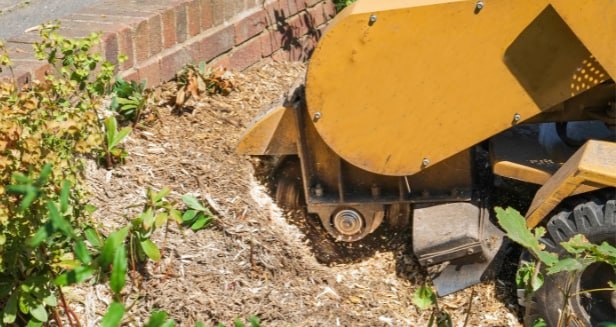
Introduction: Hedge cutting is more than just a routine garden task; it’s a vital part of maintaining the health and appearance of your hedges. At Gravesend Tree Surgeons, understanding the growth patterns of your hedges can greatly enhance their health, shape, and overall contribution to your garden. In this blog post, we’ll delve into the various growth patterns of hedges and how this knowledge can inform your cutting practices for optimal results.
- Growth Patterns in Hedges
Types of Growth Patterns
- Slow Growers: Some hedge species grow slowly, requiring less frequent trimming. Examples include Boxwood and Holly. These hedges are ideal for formal designs where a precise shape is desired.
- Moderate Growers: Many common hedges, such as Privet and Hornbeam, exhibit moderate growth. These require regular maintenance to keep their shape and density.
- Fast Growers: Fast-growing hedges like Leylandii and Laurel can quickly become overgrown if not trimmed regularly. They are perfect for creating quick privacy screens but need frequent attention to prevent them from becoming unruly.
Growth Habit
- Vertical Growth: Hedges with a vertical growth habit, such as Yew and Thuja, tend to grow upwards rather than outwards. This characteristic makes them suitable for creating tall, narrow screens.
- Bushy Growth: Hedges like Hawthorn and Blackthorn have a bushier growth habit, spreading outwards and forming dense screens. They require cutting to maintain a compact shape and prevent excessive spreading.
- Understanding the Seasonal Growth Cycle
Spring Growth
- In spring, many hedges experience a burst of new growth as they come out of winter dormancy. This is an excellent time for a light trim to encourage healthy growth and maintain shape. For fast-growing varieties, more frequent trimming may be necessary to manage the rapid development.
Summer Maintenance
- Summer is typically the best time for more substantial hedge cutting. By this stage, the hedge has developed its new growth, and cutting can help to maintain its shape and promote denser foliage. Avoid cutting during hot, dry periods to prevent stress on the plants.
Autumn Preparations
- As the growing season winds down, autumn is a good time to perform a final trim before winter. This helps to tidy up the hedge and remove any dead or damaged growth. However, avoid cutting too late in the season, as this can leave the hedge vulnerable to winter weather.
Winter Considerations
- Most hedges are dormant during winter, and cutting should be minimal. However, if you need to address any winter damage or prepare the hedge for the next growing season, do so carefully to avoid damaging the plant.
- Techniques for Effective Hedge Cutting
Proper Tools
- Use sharp, well-maintained tools for clean cuts. Hedge trimmers, secateurs, and shears should be chosen based on the size and type of hedge you are working with. Sharp blades ensure a clean cut and reduce the risk of damage to the plant.
Cutting Techniques
- Formative Pruning: For young hedges, formative pruning helps to establish a strong structure and shape. Focus on removing any crossing branches and shaping the hedge to promote an even growth pattern.
- Maintenance Pruning: For established hedges, regular maintenance pruning involves trimming to maintain shape, density, and health. To keep the hedge in good condition, aim to cut back about one-third of the new growth each year.
Avoiding Common Mistakes
- Cutting Too Late: Cutting too late in the season can leave the hedge exposed to harsh weather conditions. Aim to finish major trimming by late summer or early autumn.
- Over-Trimming: Avoid cutting too much at once, as this can stress the plant and lead to poor regrowth. Incremental trimming throughout the year is often more beneficial.
- The Benefits of Understanding Growth Patterns
Enhanced Aesthetics
- By aligning your cutting practices with your hedges’ natural growth patterns, you can achieve a more attractive and well-maintained appearance. Understanding how your hedges grow helps you shape them to complement your garden design.
Improved Health
- Regular and informed cutting practices promote healthier growth and prevent issues such as disease and pest infestations. Proper maintenance ensures that your hedges remain robust and resilient throughout the year.
Optimal Privacy and Screening
- Knowing the growth patterns helps in managing privacy and screening effectively. For instance, fast-growing hedges can quickly provide a privacy screen, while slow-growing varieties can be shaped to offer a more subtle boundary.
- When to Seek Professional Help
Complex or Large Hedges
- Professional services may be necessary to ensure precise and effective cutting for large or complex hedges. At Gravesend Tree Surgeons, we have the expertise and equipment to handle even the most challenging hedge-cutting tasks.
Design and Planning
- If you need help with the best cutting techniques or how to incorporate hedges into your garden design, consulting a professional can provide valuable insights and recommendations tailored to your specific needs.
Conclusion: Understanding your hedges’ growth patterns is key to effective and beneficial hedge cutting. By aligning your cutting practices with these patterns, you can enhance the health, appearance, and functionality of your hedges.
Call us on: 01474 554896
Click here to find out more about Gravesend Tree Surgeons
Click here to complete our contact form and see how we can help you with your tree’s needs.